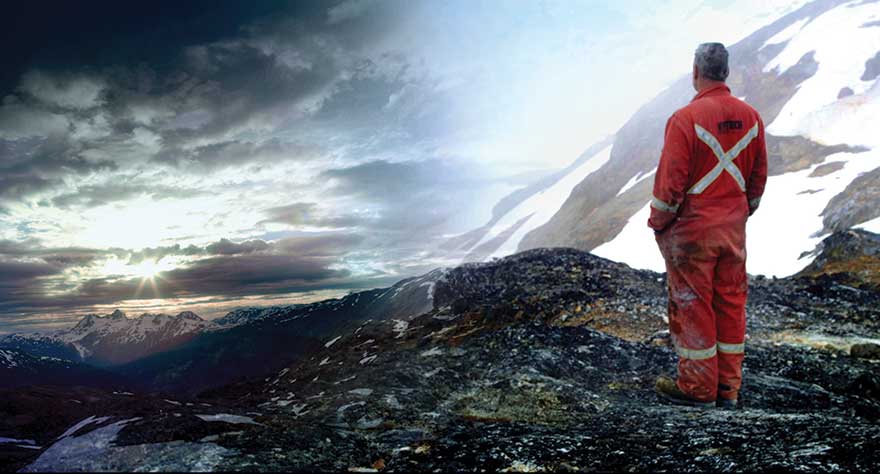
A lyrical ode to a First Nations tribe and the land they call home.

A lyrical ode to a First Nations tribe and the land they call home.
Deep in the wilderness of northern British Columbia beats the heart of the Tahltan people. They’re a First Nations tribe, surrounded by breathtaking snow-capped mountains and sharing space with various beasts they’ve called neighbors for thousands of years. The glorious expanse is seemingly timeless, largely unspoiled by deforestation and man-made structures. But as the Tahltan people struggle to retain their language and keep up native traditions in the 21st century, a new threat to their land and way of life looms. Companies wanting to mine the area for its copper and gold set up shop, and their plans put the health of the land at stake.
Director Nettie Wild weaves a dazzling tapestry with KONELĪNE: our land beautiful. More formally experimental than the average documentary, the film doesn’t attack the environmental issues through any one perspective. In fact, there isn’t much of anything here that qualifies as an “attack” at all. The approach is far more meditative. A multitude of voices overlap, sharing feelings and personal histories while Wild showcases the region through expressive cinematography and editing. What this method produces is a lyrical ode to a bountiful and diverse landscape, along with the human beings who make it their home.
For all the beauty of KONELĪNE’s visuals, it’s the human subjects who make up the bedrock of the film. A series of vignette-like sequences are threaded throughout, giving the audience some quality time with the lifestyle and viewpoints of Tahltan natives and foreigners alike. Wild follows local fishermen as they cast their nets, a woman guiding hunters on horseback through steep mountain ranges, and a man with a dogsled who speaks with pride about running the same trails his ancestors followed. She speaks with a driller who chronicles the area’s geological history, and turns her camera on a pair of conflicted Tahltan mining employees who say that, in their impoverished state, they can’t afford to turn down the jobs.
This is only a sampling of the subjects that take the spotlight. The doc’s colorful tableau of experiences brings the viewer close to the realities of living in the region, and Wild appears to take pleasure in documenting the nitty-gritties of everyday work, showing a narrow focus on the work each person does with their hands. Horseshoes are fashioned and fastened to scuffed hooves, transition lines are painstakingly set up by a small crew, and fish are carefully cleaned at homemade butchering stations by the riverbank—all of this captured with a strong attention to detail. For fans of Werner Herzog, some of these scenes may feel reminiscent of his film Happy People: A Year in the Taiga in their fascination with the earthly qualities of independent living.
The film cannot be discussed without addressing its handling of the environment. The remote countryside is lensed with the same attention to detail as the people, but the land conveys the added weight of something formidable and pure. Wide shots capture postcard-ready vistas, and well-placed close-ups—such as one of hailstones falling on butterfly wings—express a measure of fragility. As one of the interviewees notes, it’s a land “with a personality.” Aided by a soundscape that mixes twinkling bells with wind gusts and rhythmic tribal drums, Wild demonstrates how that personality transfers to the spirit of the people who live off the land.
KONELĪNE: our land beautiful is a serenely delivered tribute to the Tahltan people and the earth they’re tied to. The themes here echo environmentalism, but the film moves more like a poem than a preachy assault on corporate greed. This is transportive, ethereal documentary filmmaking that is well-worth experiencing on the biggest screen possible.